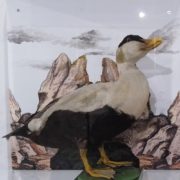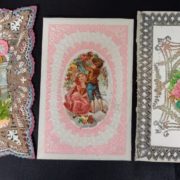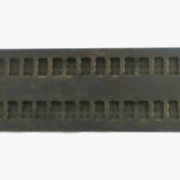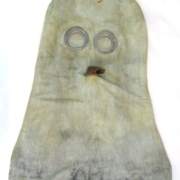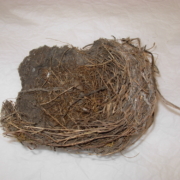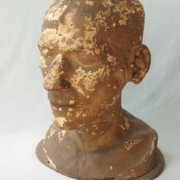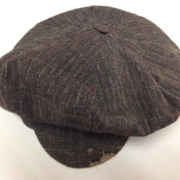Object of the Month – February 2023
This month we’re celebrating the Lost Language of Nature project, putting the finishing touches to this common eider. James and Charlotte have cleaned its plumage, repainted its beak and feet, and refreshed its base to help preserve it for future exhibitions.

Common eider mounted skin
Eider ducks are famous for their soft downy feathers which help keep them warm in freezing conditions. ‘Down’ comes from the Old Norse word ‘dúnn’, the word for the fluffy feathers of young birds and the same feathers which insulate adult birds. In adults, the down is hidden beneath the larger contour feathers which give birds their colour, patterns and shape.

Down feather © Wouter Hagens, CC BY-SA 4.0, via Wikimedia Commons
These wild ducks can be ‘farmed’ sustainably for their down feathers, which are taken from the nests once chicks have fledged. This down is used to make traditional eiderdown pillows and quilts. In the UK, eider ducks are sometime called St Cuthbert’s duck or Cuddy duck, according to the belief that St Cuthbert’s holiness protected Farne island and its population of eider ducks.

Eider nest © Paul Gierszewski (Gierszep), CC BY-SA 4.0, via Wikimedia Commons
Saffron Walden Museum wants to hear your stories about wildlife and nature in your life, or that you know from parents and grandparents, to help create more interesting, relevant and diverse displays in the future. Fill in a postcard in the Museum to join in or search online for ‘Lost Language Saffron Walden Museum’.
Learn more about this Object of the Month in the Museum throughout February.


